-
Reagents
- Flow Cytometry Reagents
-
Western Blotting and Molecular Reagents
- Immunoassay Reagents
-
Single-Cell Multiomics Reagents
- BD® OMICS-Guard Sample Preservation Buffer
- BD® AbSeq Assay
- BD® Single-Cell Multiplexing Kit
- BD Rhapsody™ ATAC-Seq Assays
- BD Rhapsody™ Whole Transcriptome Analysis (WTA) Amplification Kit
- BD Rhapsody™ TCR/BCR Next Multiomic Assays
- BD Rhapsody™ Targeted mRNA Kits
- BD Rhapsody™ Accessory Kits
- BD® OMICS-One Protein Panels
-
Functional Assays
-
Microscopy and Imaging Reagents
-
Cell Preparation and Separation Reagents
-
- BD® OMICS-Guard Sample Preservation Buffer
- BD® AbSeq Assay
- BD® Single-Cell Multiplexing Kit
- BD Rhapsody™ ATAC-Seq Assays
- BD Rhapsody™ Whole Transcriptome Analysis (WTA) Amplification Kit
- BD Rhapsody™ TCR/BCR Next Multiomic Assays
- BD Rhapsody™ Targeted mRNA Kits
- BD Rhapsody™ Accessory Kits
- BD® OMICS-One Protein Panels
- Switzerland (English)
-
Change country/language
Old Browser
This page has been recently translated and is available in French now.
Looks like you're visiting us from United States.
Would you like to stay on the current country site or be switched to your country?
BD IMag™ Anti-Mouse IgG1 Magnetic Particles - DM
Clone A85-1 (RUO)

Figure 1. Depletion of human T and B lymphocytes and NK cells. Human PBMC were stained with APC Mouse Anti-Human CD4 mAb RPA-T4 (Cat. No. 555349), CD8 mAb RPA-T8 (Cat. No. 555369), CD19 mAb HIB19 (Cat. No. 555415), and CD56 mAb B159 (Cat. No. 555518), then labeled with BD IMag™ Anti-Mouse IgG1 Magnetic Particles - DM (Cat. No. 557983). After labeling, the cells were separated using the BD IMag™ Cell Separation Magnet, and the depleted and positive fractions were collected as described in the Magnetic Labeling and Separation Protocol. Please refer to the Depletion Flow Chart to identify the separated cell populations represented in this figure. Unseparated PBMC (left panel), the final depleted fraction (middle panel), and the positive fraction (right panel) were analyzed by flow cytometry. Nonviable cells were eliminated from analysis by staining with Propidium Iodide Staining Solution (Cat. No. 557983), and mononuclear cells were identified by scatter profile. The percentage of non-T-B-NK leukocytes in each sample is given. Flow cytometry was performed on a BD FACSCalibur™ flow cytometry system.
Figure 2. Positive selection of rat αß TCR-expressing T lymphocytes. Lewis rat splenocytes were stained with FITC Mouse Anti-Rat αß TCR mAb R73 (Cat. No. 554913), and then labeled with BD IMag™ Anti-Mouse IgG1 Magnetic Particles - DM. After labeling, the cells were separated using the BD IMag™ Cell Separation Magnet, and the negative and positive fractions were collected as described in the Magnetic Labeling and Separation Protocol. Please refer to the Positive Selection Flow Chart to identify the separated cell populations represented in this figure. Unseparated Spleen (left panel), the Negative Fraction (middle panel), and the Positive Fraction (right panel) were analyzed by flow cytometry. Nonviable cells were eliminated from analysis by staining with propidium iodide, and all viable leukocytes are displayed. The percentage of αβ TCR+ T lymphocytes in each sample i


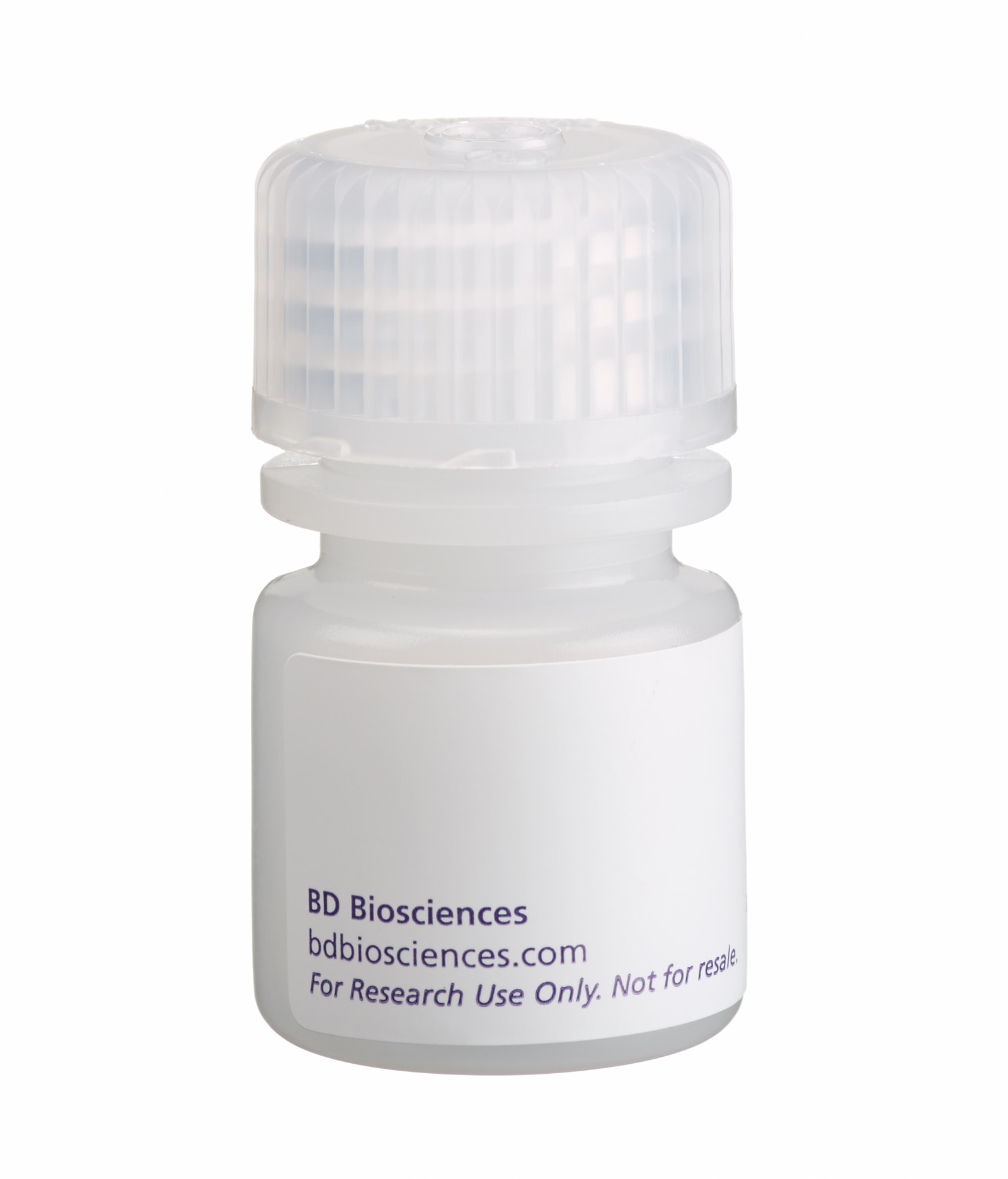
Figure 1. Depletion of human T and B lymphocytes and NK cells. Human PBMC were stained with APC Mouse Anti-Human CD4 mAb RPA-T4 (Cat. No. 555349), CD8 mAb RPA-T8 (Cat. No. 555369), CD19 mAb HIB19 (Cat. No. 555415), and CD56 mAb B159 (Cat. No. 555518), then labeled with BD IMag™ Anti-Mouse IgG1 Magnetic Particles - DM (Cat. No. 557983). After labeling, the cells were separated using the BD IMag™ Cell Separation Magnet, and the depleted and positive fractions were collected as described in the Magnetic Labeling and Separation Protocol. Please refer to the Depletion Flow Chart to identify the separated cell populations represented in this figure. Unseparated PBMC (left panel), the final depleted fraction (middle panel), and the positive fraction (right panel) were analyzed by flow cytometry. Nonviable cells were eliminated from analysis by staining with Propidium Iodide Staining Solution (Cat. No. 557983), and mononuclear cells were identified by scatter profile. The percentage of non-T-B-NK leukocytes in each sample is given. Flow cytometry was performed on a BD FACSCalibur™ flow cytometry system.
Figure 2. Positive selection of rat αß TCR-expressing T lymphocytes. Lewis rat splenocytes were stained with FITC Mouse Anti-Rat αß TCR mAb R73 (Cat. No. 554913), and then labeled with BD IMag™ Anti-Mouse IgG1 Magnetic Particles - DM. After labeling, the cells were separated using the BD IMag™ Cell Separation Magnet, and the negative and positive fractions were collected as described in the Magnetic Labeling and Separation Protocol. Please refer to the Positive Selection Flow Chart to identify the separated cell populations represented in this figure. Unseparated Spleen (left panel), the Negative Fraction (middle panel), and the Positive Fraction (right panel) were analyzed by flow cytometry. Nonviable cells were eliminated from analysis by staining with propidium iodide, and all viable leukocytes are displayed. The percentage of αβ TCR+ T lymphocytes in each sample i

Figure 1. Depletion of human T and B lymphocytes and NK cells. Human PBMC were stained with APC Mouse Anti-Human CD4 mAb RPA-T4 (Cat. No. 555349), CD8 mAb RPA-T8 (Cat. No. 555369), CD19 mAb HIB19 (Cat. No. 555415), and CD56 mAb B159 (Cat. No. 555518), then labeled with BD IMag™ Anti-Mouse IgG1 Magnetic Particles - DM (Cat. No. 557983). After labeling, the cells were separated using the BD IMag™ Cell Separation Magnet, and the depleted and positive fractions were collected as described in the Magnetic Labeling and Separation Protocol. Please refer to the Depletion Flow Chart to identify the separated cell populations represented in this figure. Unseparated PBMC (left panel), the final depleted fraction (middle panel), and the positive fraction (right panel) were analyzed by flow cytometry. Nonviable cells were eliminated from analysis by staining with Propidium Iodide Staining Solution (Cat. No. 557983), and mononuclear cells were identified by scatter profile. The percentage of non-T-B-NK leukocytes in each sample is given. Flow cytometry was performed on a BD FACSCalibur™ flow cytometry system.
Figure 2. Positive selection of rat αß TCR-expressing T lymphocytes. Lewis rat splenocytes were stained with FITC Mouse Anti-Rat αß TCR mAb R73 (Cat. No. 554913), and then labeled with BD IMag™ Anti-Mouse IgG1 Magnetic Particles - DM. After labeling, the cells were separated using the BD IMag™ Cell Separation Magnet, and the negative and positive fractions were collected as described in the Magnetic Labeling and Separation Protocol. Please refer to the Positive Selection Flow Chart to identify the separated cell populations represented in this figure. Unseparated Spleen (left panel), the Negative Fraction (middle panel), and the Positive Fraction (right panel) were analyzed by flow cytometry. Nonviable cells were eliminated from analysis by staining with propidium iodide, and all viable leukocytes are displayed. The percentage of αβ TCR+ T lymphocytes in each sample i



BD IMag™ Anti-Mouse IgG1 Magnetic Particles - DM

BD IMag™ Anti-Mouse IgG1 Magnetic Particles - DM

Regulatory Status Legend
Any use of products other than the permitted use without the express written authorization of Becton, Dickinson and Company is strictly prohibited.
Preparation And Storage
Recommended Assay Procedures
MAGNETIC LABELING AND SEPARATION PROTOCOL
1. Prepare the following buffers and place on ice.
a. Cell-staining buffer: Phosphate Buffered Saline, 3% heat inactivated fetal calf serum, 0.1% sodium azide.
b. 1X BD IMag™ buffer: Dilute BD IMag™ Buffer (10X) (Cat. no. 552362) 1:10 with sterile distilled water or alternatively, prepare Phosphate Buffered Saline, supplemented with 0.5% BSA, 2 mM EDTA, and 0.09% sodium azide.*
2. Prepare a single-cell suspension from the lymphoid tissue of interest or prepare peripheral blood mononuclear cells (PBMC) from anti-coagulated blood, preferably by density gradient centrifugation using the appropriate density Ficoll-Paque™ solution. Remove clumps of cells and/or debris by passing the suspended cells through a 70-µm nylon cell strainer.
3. Count the cells, and resuspend them in cell-staining buffer at a concentration of 2 x 10e7 cells/ml.
4. Add the mouse IgG1 antibody (or cocktail of mouse IgG1 antibodies) at the appropriate concentration, and incubate on ice for 15 minutes.†
5. Wash the labeled cells with an excess volume of 1X BD IMag™ buffer, and carefully aspirate ALL the supernatant. For depletions, proceed with Step 6. For positive selections, proceed with Step 17.
Depletions:
6. Vortex the BD IMag™ Anti-Mouse IgG1 Magnetic Particles - DM thoroughly, and add 50 µl of particles for every 1 x 10e7 total cells.
7. MIX THOROUGHLY. Refrigerate rat or mouse leukocytes for 30 minutes at 6°C -12°C. Incubate human PBMC at room temperature for 30 minutes.†
8. Bring the labeling volume up to 2-8 x 10e7 cells/ml with 1X BD IMag™ buffer or culture medium.*
9. Transfer the labeled cells to a 12 x 75 mm round-bottom test tube, maximum volume added not to exceed 1.0 ml. Place this positive-fraction tube on the Cell Separation Magnet (horizontal position) for 6-8 minutes.
- For greater volume, transfer the cells to a 17 x 100 mm round-bottom test tube, maximum volume added not to exceed 3.0 ml. Place this positive-fraction tube on the Cell Separation Magnet (vertical position) for 8 minutes.
10. With the tube on the Cell Separation Magnet and using a glass Pasteur pipette, carefully aspirate the supernatant (depleted fraction) and place in a new tube.
11. Remove the positive-fraction tube from the Cell Separation Magnet, and add 1X BD IMag™ buffer (or medium) to the same volume as in Step 9. Resuspend the positive fraction well by pipetting up and down 10-15 times and place back on the Cell Separation Magnet for 6-8 minutes. - 17 x 100 mm tube: Place on the Cell Separation Magnet for 8 minutes.
12. Using a new Pasteur pipette, carefully aspirate the supernatant and combine with the depleted fraction from Step 11 above.
13. Repeat Steps 11 and 12. The combined depleted fraction contains cells with no bound antibodies or magnetic particles. These cells are ready for downstream applications, or they can be further enriched by proceeding to Step 15.
14. The positive-fraction cells remaining in the original tube can be resuspended in an appropriate buffer or culture medium for downstream applications, including flow cytometry.
15. To increase the purity of the combined depleted fraction, place the tube on the Cell Separation Magnet for another 6-8 minutes.
- 17 x 100 mm tube: Place on the Cell Separation Magnet for 8 minutes.
16. Carefully aspirate the supernatant (the final depleted fraction) and place in a new tube. The cells are ready for downstream applications.
Positive Selections:
17. Vortex the BD IMag™ Anti-Mouse IgG1 Magnetic Particles - DM thoroughly, and add 10-50 µl of particles for every 1 x 10e7 total cells.
18. MIX THOROUGHLY. Refrigerate rat or mouse leukocytes for 30 minutes at 6°C -12°C. Incubate human PBMC at room temperature for 30 minutes.†
19. Bring the labeling volume up to a concentration of 2-8 x 10e7 cells/ml with 1X BD IMag™ buffer.
20. Immediately place the tube onto the Cell Separation Magnet and incubate for 6-8 minutes.
21. With the tube on the Cell Separation Magnet, carefully aspirate the supernatant. This supernatant is considered the Negative Fraction.
22. Remove the tube from the Cell Separation Magnet, and add 1X BD IMag™ buffer to the same volume as in Step 19. Gently resuspend the cells by pipetting up and down, and return the tube to the Cell Separation Magnet for another 2-4 minutes.
23. With the tube on the Cell Separation Magnet, carefully remove the supernatant.
24. Repeat Steps 22 and 23.
25. After the final wash step, remove the tube from the Cell Separation Magnet. Resuspend the Positive Fraction in an appropriate buffer or culture medium, and proceed with desired downstream application(s), including flow cytometry.
NOTES:
* For depletion of rat leukocytes, tissue culture medium usually results in a slight increase in viability and recovery, when compared to IMag buffer, without reducing cell purity. Because applications can vary, researchers are encouraged to run a trial comparison of culture media and IMag buffer to demonstrate that there are no adverse effects.
† Avoid non-specific labeling by working quickly and adhering to recommended incubation times.
Product Notices
- BD IMag™ particles are prepared from carboxy-functionalized magnetic particles which are manufactured by Skold Technology and are licensed under US patent number 7,169,618.
- Caution: Sodium azide yields highly toxic hydrazoic acid under acidic conditions. Dilute azide compounds in running water before discarding to avoid accumulation of potentially explosive deposits in plumbing.
- Source of all serum proteins is from USDA inspected abattoirs located in the United States.
- Ficoll-Paque is a trademark of Amersham Biosciences Limited.
- Please refer to www.bdbiosciences.com/us/s/resources for technical protocols.
Data Sheets
Companion Products
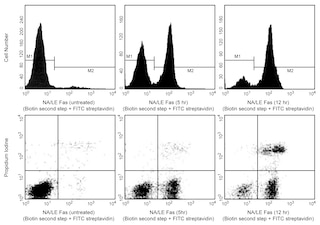
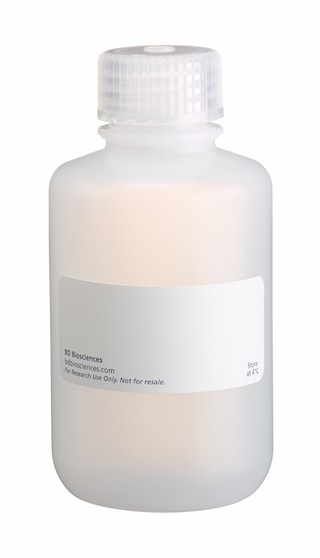
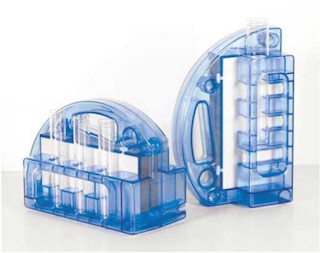
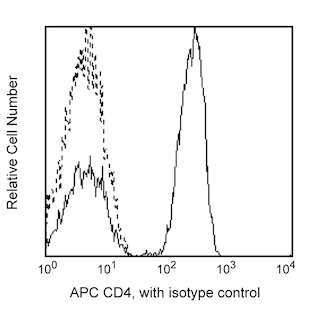
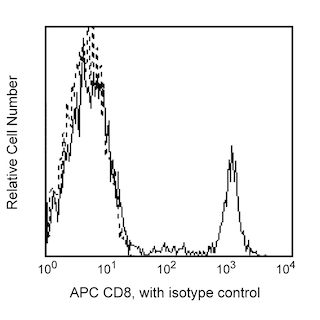
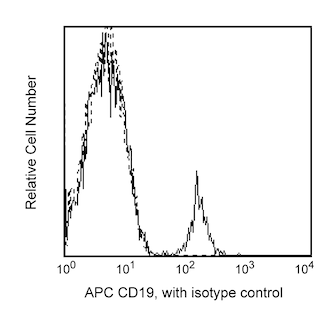
BD IMag™ Anti-Mouse IgG1 Magnetic Particles -DM are magnetic nanoparticles conjugated with a monoclonal antibody. The A85-1 antibody clone has been reported to react specifically with mouse IgG1 of Igh-Ca and Igh-Cb haplotypes, but not other Ig isotypes. These particles are optimized for the positive selection or depletion of leukocyte subpopulations labelled with mouse IgG1 antibodies using the BD IMag™ Cell Separation Magnet.
Leukocytes are labelled with BD IMag™ Anti-Mouse IgG1 Magnetic Particles - DM according to the Magnetic Labeling and Separation Protocol. In brief, cells are labeled with a mouse IgG1 antibody that recognizes the subpopulation of interest. After washing away excess antibody, BD IMag™ Anti-Mouse IgG1 Magnetic Particles -DM are added to the cell suspension and bind the mouse IgG1 antibody on the cells. This labeled cell suspension is then placed within the magnetic field of the BD IMag™ Cell Separation Magnet (Cat.No. 552311). Positive selection or depletion is then performed. Labeled cells migrate toward the magnet (positive fraction), leaving the unlabeled cells in suspension so they can be drawn off (depleted or negative fraction). The tube is then removed from the magnetic field for resuspension of the positive fraction. The magnetic separation steps are diagrammed in the Depletion and Positive Selection Flow Charts. After the positive fraction has been washed, the small size of the magnetic particles allows the positive fraction to be further evaluated in downstream applications such as flow cytometry.
No Citations Are Available for this Product
Please refer to Support Documents for Quality Certificates
Global - Refer to manufacturer's instructions for use and related User Manuals and Technical data sheets before using this products as described
Comparisons, where applicable, are made against older BD Technology, manual methods or are general performance claims. Comparisons are not made against non-BD technologies, unless otherwise noted.
For Research Use Only. Not for use in diagnostic or therapeutic procedures.